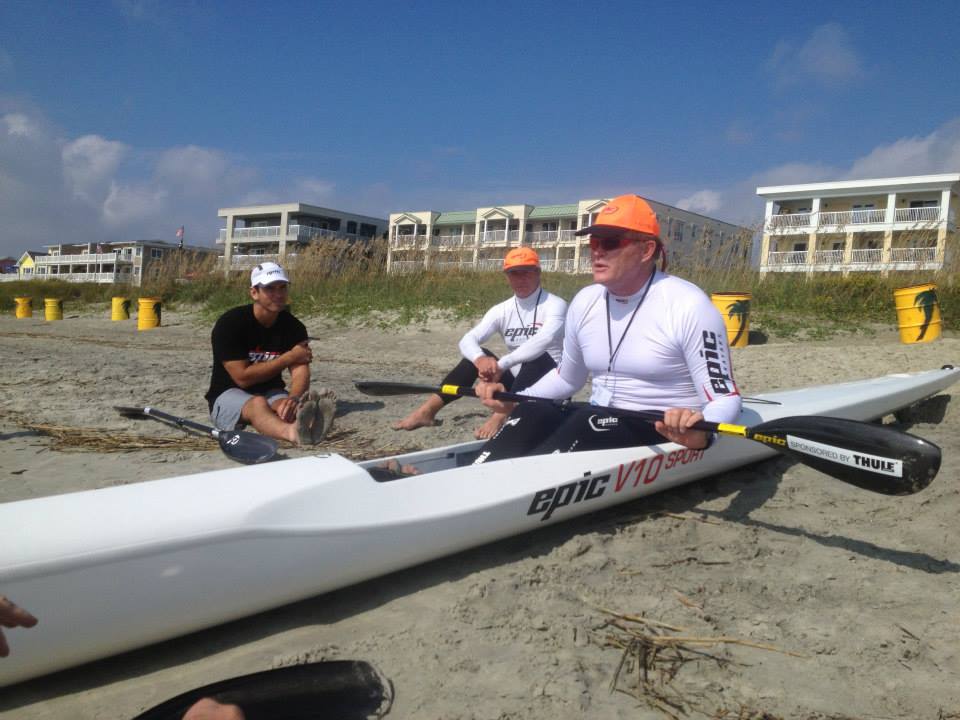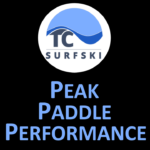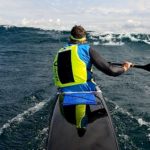Oscar Chalupsky Clinic – Learn from the Best
I know many of you have been anxiously awaiting my experience, thoughts, and insights on the infamous Oscar Chalupsky Forward Stroke Technique Clinic. I will try to do my best in this blog to describe it, but the great news is that yesterday I received confirmation from Epic that OSCAR CHALUPSKY WILL BE MAKING A TRIP TO MICHIGAN NEXT SUMMER AND DOING A CLINIC ON JULY 28TH. SIGN UP HERE!
Anyone who knows Oscar, knows that he is not one to mince words or to shy away from controversy. The first thing he tells you at his clinic is to forget everything you’ve ever been told. His approach is the only one you need to focus on so forget about the rest. This was all I needed to hear, as explained in my prior blog, I’m fully addicted to the fun of challenging conventional wisdom. In the end, there are certain core fundamentals to the forward stroke that Oscar aligns with, but there are definitely some very unique differences where he has really challenged the conventional wisdom and what is regarded as the optimal technique that has been taught for decades originating out of the Sprint Kayak World.
Never Underestimate Technique and the Drills to Achieve It
Oscar loves to win, but he also loves to have a lot of fun and has dedicated himself to keeping an unimaginable pace traveling the world as an ambassador to surfski paddling and spreading his passion for the sport. It is virtually impossible to do all this and compete at the highest levels against guys 20 years younger. Yet somehow Oscar manages to pull this off through his legendary skill in big water, but also a maniacal focus on having an optimal forward stroke technique. When he is actually home and training, Oscar either paddles downwind in the ocean or does technique drills in a small 500 meter long reservoir by his house. For him it is either down-wind, or flat water technique and intervals. For many of us mere mortals, I do think it is important to practice paddling in the mixed conditions we’ll find in our races, but do not underestimate the value of finding time to do drills on flat water or a Kayak Simulator such as the Speedstroke ERG.
Increase your % of Good Strokes
Oscar’s view on technique is that you’ll never be perfect, but by constantly doing drills you will gradually increase the percentage of perfect strokes that you’ll take in any given race. In a two hour race at a cadence of 80-90 you will take 10,000 strokes. You can imagine that even just a fractional increase in percent of good strokes will add up and save time. I am noticing that this is even more so the case in downwind paddling. It is such a dynamic environment and the waves are moving so quick that if you splash the water and miss a good powerful stroke it will often cost you in your positioning and you’ll either have to work harder to catch back up to where you needed to be or you’ll miss the wave altogether and lose valuable time.
Below are some of the key concepts Oscar preaches:
Catch – The catch is absolutely the critical first step in getting a good stroke. The blade must be fully inserted as far forward as possible with minimal splash into the water before you apply power
Power Phase – The power phase is all about generating maximum full body power. This is done by the chain reaction of straightening your stroke side leg (which should naturally raise as you spear the blade), rotating/opening the hip and pulling with a straight lower arm. We practiced a pulling drill to get this idea down. My best analogy is to think about how you start a lawn mower. As you setup to make the pull you naturally bend your knee. The first part of the motion is to straighten your leg and use the momentum from that movement to rotate at the hips and pull with a straight arm. This is very similar to what you are doing with the paddle. The top hand is for the most part stationary through much of the stroke, drawing an equidistant arc as the upper body rotates and the top hand elbow comes forward to where it could touch the same side knee.
Exit – Start the exit when the blade is at your knee. I have always heard this, but it really clicked when I saw Oscar do it and explain it. Rather than lifting the entire arm at the shoulder as many do, Oscar exits simply by pivoting the forearm/wrist up while keeping the elbow down and in
Recovery – Unlike a lot of sprint coaches, Oscar doesn’t emphasize a big pause or over exaggeration on the recovery. Rather, once the blade exits you should be perfectly positioned to spear on the opposite side with no wasted movement.
Differences from traditional technique:
- Elbows – With Oscar’s style the elbows stay down and in as much as possible through the stroke
- Top Hand – Oscar does not emphasis a high top hand like you will see with most traditional sprinters. The top hand should remain at a consistent level throughout the stroke, but does not need to be at eye level. The high top hand technique is exhausting over a long paddle, requires the blade to travel further through the air before hitting the water (wasted energy) and compromises stability
- No Pause – I don’t know that I recall all the details here, but essentially I think it is just not as beneficial in long distance surfski paddling and Oscar hates to see a paddle out of the water (this applies to any and all situations – never let him catch you with a blade not touching the water or you’ll be sure to invoke a few expletives.)
Why I am a believer
- Oscar is living proof his technique approach works!
- It makes a lot of fundamental sense and ultimately feels the most natural. Oscar effectively eliminates any/all unnatural movement
- It increases your time in the “Power Zone”. Ultimately there is no dispute that the first 8 inches of the stroke is where all the power happens. So the goal should be to maximize the percent of time that the blade is in that “power zone”. This is what Oscar does so effectively. (For the cross country skiers out there, this feels a lot like where everything is going with the double pole. Elbows bent and in, maximizing use of the core muscles and the power zone at initial pole plant, constantly focusing on eliminating any/all extraneous movement outside the power zone. Bring it in tight, leverage the core.)
- There is no doubt in my mind that Oscar’s technique is the absolute best for injury prevention. Your shoulders, rotator cuff, etc. will forever thank you and you’ll ensure a long and enjoyable paddling career if you commit to keeping the elbows down and getting that early exit.
My Experience
I’ve been practicing what Oscar taught us since I returned from Charleston in Mid October. It has been a combination of paddling both on the water and on the Speedstroke ERG. The Speedstroke is amazing for technique work. I have it parked in front of a big mirror and can spend time analyzing each and every component of the stroke in grave detail without all the distractions that come into play on the water. I can’t say enough about the value of this.
Something must be working because this past Saturday I went out and had my fastest overall average on a downwind run, averaging 8 mph in 2-3 foot waves (previous fastest average was 7.6). No major wind or record breaking maximum speeds, but very steady and consistent.
The Proof – Something Must Be Working
As mentioned, I’ll post the date for Oscar’s clinic in Traverse City as soon as it is confirmed. I can’t wait to show him the paddling in Northern Michigan!



